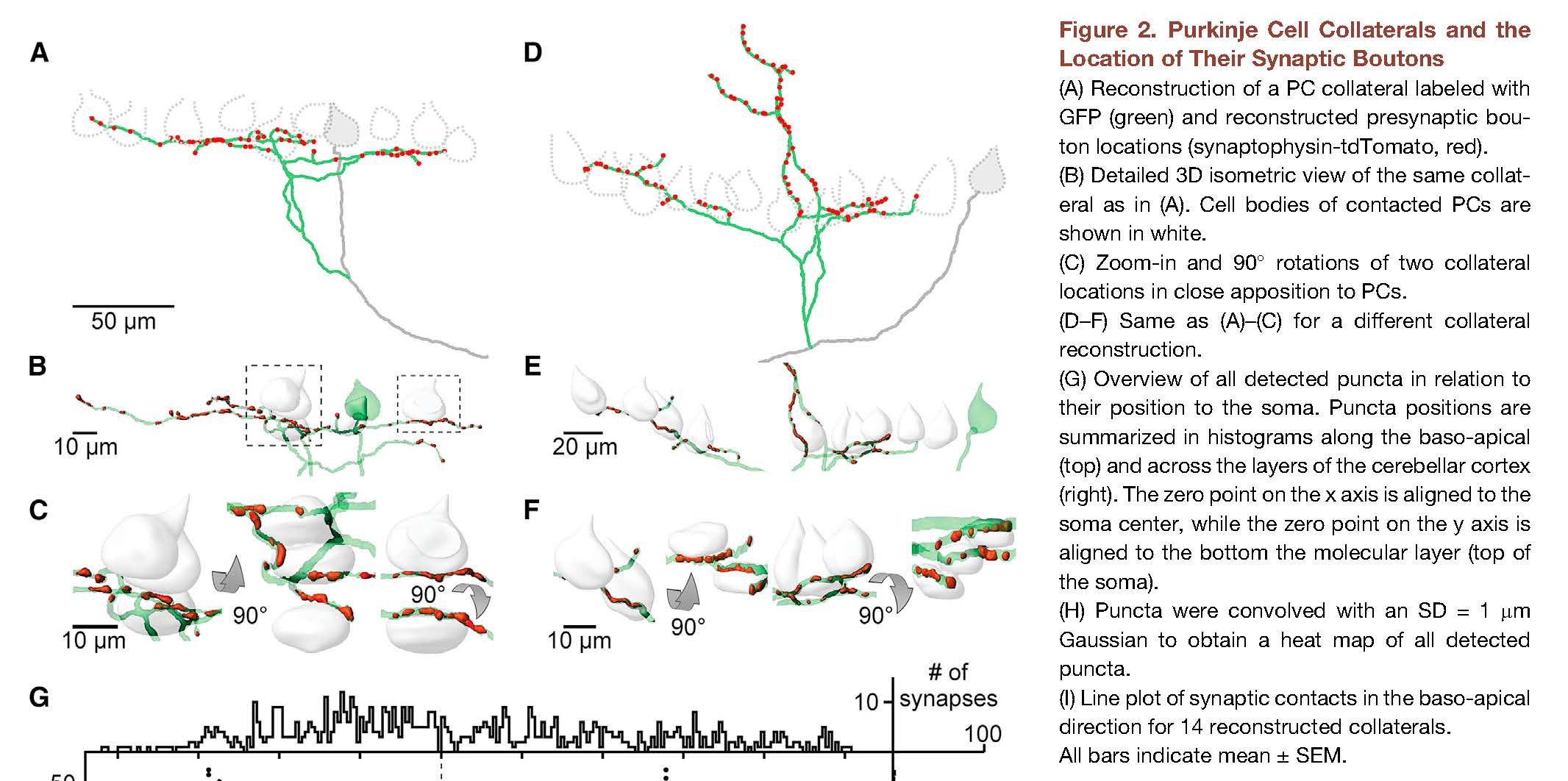WitterL+4-2016¶
Notes about [WitterL+4-2016] 1.
- 1
Laurens Witter, Stephanie Rudolph, R. Todd Pressler, Safiya I. Lahlaf, and Wade G. Regehr. Purkinje Cell Collaterals Enable Output Signals from the Cerebellar Cortex to Feed Back to Purkinje Cells and Interneurons. Neuron, 91(2):312–319, July 2016. URL: https://linkinghub.elsevier.com/retrieve/pii/S0896627316302483, doi:10.1016/j.neuron.2016.05.037, Notes: WitterL+4-2016.html (this file).
This paper shows that Purkinje cell collaterals Feed Back to Purkinje Cells and Interneurons. Experiments were done using mice.
317:
Collaterals were confined to a narrow sagittal plane but extended hundreds of micrometers within that plane.
… we estimate that each PC receives input from five to ten other PCs (Figure 4). This is in good agreement with our estimates of convergence from our synaptic labeling experiments in which each PC forms synaptic contacts near approximately six to eight PCs (Figure 2). PC axon collateral synapses onto PCs and MLIs could regulate activity in narrow parasagittal strips, which are likely contained within broader zebrin bands that constitute functional units (Apps and Hawkes, 2009). Both PC collaterals and MLI axons are restricted to narrow parasagittal planes (Gao et al., 2006; Hawkes and Leclerc, 1989). Therefore, PC feedback regulates cerebellar activity at the output stage in these functionally delimited zones, and could potentially act to regulate the rate or timing of firing of PCs and MLIs.
PC collaterals could allow the output of the cerebellar cortex to feed back and control the gain of the cerebellar cortex. Gain control by inhibitory feedback is a common mechanism to maintain the dynamic range of neural circuits. When principal output neurons are excitatory, inhibitory feedback requires interneurons as in the cerebral cortex (Olsen et al., 2012) and hippocampus (Freund and Buzsa ́ki, 1996). When output neurons are GABAergic, as in the basal ganglia and as described here for the cerebellum, gain control can be achieved by connections between the output cells (Brown et al., 2014). If PC collaterals control the firing rate of their targets, then PC-to-PC connections allow PC activity to suppress the output of the cerebellar cortex. In contrast, PC-to-MLI synapses would have the opposite effect and would suppress inhibition of MLIs to PCs, thereby providing positive feedback. The time course and extent of feedback on PC firing rates will thus depend on collateral con- nectivity and the balance of direct inhibition and indirect disinhibition.

Figure 2 in WitterL+4-2016 [WitterL+4-2016].¶